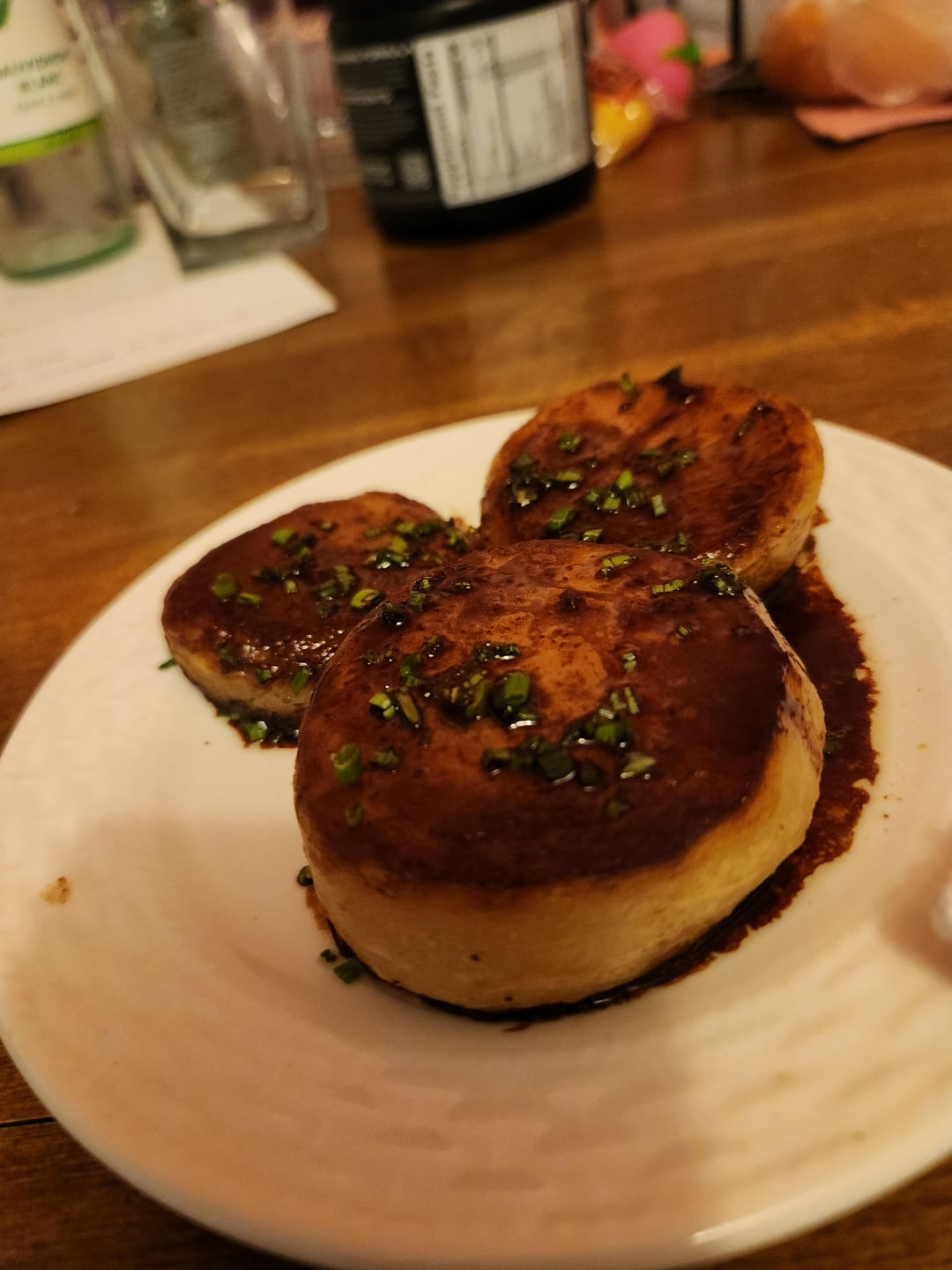

I'm posting this to ask a couple of questions,
- What type of squeeze bottle (or other tool) do you recommend for plating leek oil? I thought that the nozzle on my squeeze bottle was narrow, but the stream of oil was pretty thick
- What do you recommend for preventing the fondant pan sauce from breaking? I've seen that xanthan gum can be good for fixing this (unfortunately I didn't have any at the time). I think what happened is that I reduced my stock (store-bought beef stock) too far, to more of a demi-glace, which prevented a strong emulsion. Would adding some water have been sufficient?
Any other feedback is greatly appreciated. I've picked up cooking as a hobby to cope with job market struggles, and it has been a great journey so far. Both items were made using Fallow YouTube videos as rough guides.
Thank you for your time.
by ef02


5 Comments
Bonjour!
Je suis sûr qu’ils ont bon goût tout d’abord, Fallow propose d’excellents tutoriels, en les suivant, vous aurez du mal à vous tromper.
1. Si vous pouvez lui trouver plus d’une utilisation, vous pouvez vous procurer des bouteilles à pointe d’aiguille dans lesquelles vous obtiendrez une vapeur d’huile extrêmement fine. Personnellement, j’ai toujours recyclé la bouteille dans laquelle mes huiles entrent car la buse est raisonnablement bonne.
2. Beurre froid, la gomme xanthane fonctionne mais si vous pouvez le faire sans, vous vous en remercierez. Le beurre froid dans une poêle à feu doux-moyen aidera à l’émulsification.
3. Ma principale critique concerne le volume de sauce par rapport au poisson et la variété de taille des pommes de terre, idéalement votre fondant serait le même.
If you want lines / circles, you just need a finer tip on your squeeze bottle or a lighter touch. If you want dots, get a lil eye dropper. As far as the sauce breaking, keep it lower temp / less time. Don’t mess with gums and whatnot, that’s just putting a bandaid on it. Looks tasty though!
For such light coloured components, it’s not a bad idea to split your sauce with the leek oil just before plating. That way you get a good colour distribution and add some solid visual interest.
This is perfect time to ask a question I have had for . . . decades?
Is my aversion to “Mickey Mouse pancakes vibes” when plating a valid and/or universal gut-feeling, or is it just a personal hang-up that I should stop letting limit my plating options?
White fish with white sauce on white plate. This is a big problem in the first dish.
If you torch it to give it some charred look, and use a black plate, it will easily look way better.
For the second dish, I would remove the chive and add other types of microgreen that does not stick to the sauce that much. It is now drenched in sauce.
To avoid sauce from breaking, I would suggest xanthan gum too. It works but has no taste, unlike starch water. If not, some starch water helps, but do cook it through.